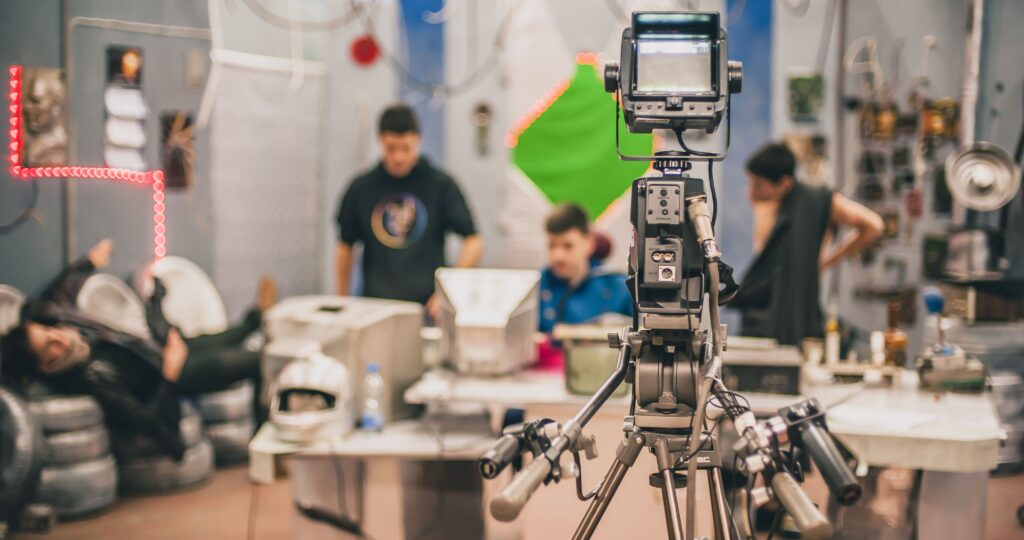The World of Film Production: How to Make a Movie

Ever wondered how to make a movie?
We’re here to tell you that there’s never been a better time to put your aspirations into action.
With new trends, strategies, and technologies bursting onto the scene at an exciting pace, indie filmmakers are at long last proving one thing:
You no longer need a blockbuster budget to make a hit movie.
Original content is now in demand. In fact, in 2023 alone Disney invested an impressive $10.5bn in original content.
With social media, streaming options and technology all easily accessible there’s a new, more contemporary film industry on the market, one that’s revolutionizing the way films are produced, edited and watched right before our eyes.
But what does it take to produce a movie?
Precision, planning, patience, and naturally raw talent.
The film production process is multifaceted, requiring an entire array of abilities from throughout the entertainment world.
The following blog article is going to walk you through a tour of film production—first, planning pre-production, and then, how to bring your film out to the public.
So let’s get started.
Phase one: Pre-production
Right off the bat, you’ve got to do some groundwork.
Pre-production is all about the plan—laying down a solid foundation to guarantee the seamless success of your film.
Key pre-production aspects:
Script breakdowns
A script breakdown transforms your written script into a visual guide for filmmaking.
The producer first creates a rough version for budgeting and initial scheduling.
Then, the first assistant director (first AD) creates a detailed breakdown for building the entire shooting schedule.
This is the process of labeling various elements in the scene—actors, stunts or special requirements—to indicate what is required to shoot, thus making planning efficient and effective allocation of resources.
Scene elements that you can label include:
Cast members
Stunts
Cars
Props
Special effects
Animals and handlers
Set dressing
Make-up and costumes
The list continues. Here is a deeper look at the process in a video.
Storyboarding
Storyboarding refines the script breakdown by visually tracing the movie shot by shot.
This phase involves artists sketching scenes to help filmmakers visualize the narrative, determine camera angles and anticipate filming challenges.
Your storyboard is a vital communication tool between the director, cinematographer and other key crew members, making sure you’re all on the same page with a unified vision for your final film output.
Budgeting
Smart budgeting involves meticulously mapping out the financial resources for your film project.
You’ll be in a position to properly allocate funds, anticipate financial challenges and take proactive steps towards the funding you require.
There will be costs to consider, including scriptwriting, actor compensation, crew salaries and location fees, so you’re ready for the production stage.
Casting
The right cast must be chosen.
From the lead actor to the supporting actors, each and every one of them has the ability to make or break the entire story of your novel.
Through read-throughs and callbacks and auditions, the crew—the director, producer and casting director—searches for the best chemistry and character fit.
Location Scouting
Finding the ideal setting for your tale is an adventure by itself.
Location scouting entails checking out different venues, assessing their viability for scenes and negotiating use rights.
It’s a joint operation, typically headed by the director and the production designer, who visit each possible location to view its visual beauty, logistical feasibility and potential to advance the narrative.
Considerations such as lighting, sound level, access for staff and equipment and permit requirements are all weighed.
Phase Two: Production
There is no experience quite like a film set’s adrenaline kick.
But it’s not all yelling “Action!” and “Cut!” The magic comes in getting those perfect performances, while ensuring the intricate logistics of filming are smooth.
Key production elements:
Filming
Filming is the most seen aspect of the filmmaking process, but achievement rests on meticulous pre-production to ensure streamlined time, resource and personnel management.
Lighting, camera and direction are important, creating mood in scenes and performances by actors. Sound recording is also crucial, picking up dialogue and background sounds that create realism and texture.
And in today’s world, advances in technology like high-definition cameras and AI editing are providing filmmakers with creative possibilities like never before.
Recording Performances
Ultimately, the purpose of your film is to engage with its audience.
You desire to seize outstanding performances making your movie all the more engaging and emotive, with expressions, movements, and interactions providing the story via your cast.
You will be working towards sheer story clarity while transferring the layers of the storyline, including the depth and progress of characters.
Handling Logistics
Balancing calendars and gifts of talent getting the dream group together under a single roof (or canopy) is no tiny achievement.
But it’s more than that-the logistics of the cast and crew. Other thing to consider for production involves:
Equipment rental
Transportation
Catering
Crowd control and security
Location management
You will likely have to contend with challenges like time and budgetary problems, aside from those weather surprises Mother Nature throws at you.
Our advice?
Prioritize tasks, allocate resources wisely and maintain a dynamic schedule that can adapt to unexpected changes. That way you’ll be ready for anything.
Phase Three: Post-Production
Post-production is the phase where your raw footage is perfected through editing, sound design and visual effects.
You’ll make key decisions here, shaping the most unforgettable aspects of your film production.
Key post-production elements:
Editing
The editing stage is an involved process.
First, video is logged and structured in editing platforms, in synchrony with the script.
The film is thereafter compiled in synchronization with the shoot by editors, facilitating rapid cuts and re-shooting.
A rough cut is then produced, giving the complete content for first impression evaluation.
Fine cut involves working with specialized teams to enrich the film’s aspects.
Lastly, there comes the final cut of the film, where all music, sound and visual effects have been combined and the story presented in all its glory.
Sound Design
The quiet whisper of leaves. The unsettling quiet of a suspenseful moment. The ringing clash of swords in combat.
Sound design weaves together dialogue, sound effects and Foley in a delicate balance to create an audio world that adds layers of richness and emotion to the imagery.
Through skillful manipulation and layering of audio elements, sound design bridges the gap between the screen and the viewer, making the cinematic experience deeply engaging and multidimensional.
Visual effects
In their quest to deliver more immersive experiences, filmmakers are embracing visual effects (VFX).
With modern VFX you’ll be able to create imaginative scenes and characters beyond the limits of physical filming.
Key VFX techniques include:
→ CGI: Creates detailed digital work, ranging from environments to creatures
→ Compositing: Combines live-action and digital material
→ Motion capture: Records actual movements to get digital characters closer to realism
→ 3D modeling: Creates the digital basis for objects and characters within 3D space
Learn more about or VFX courses on campus and online
Phase Four: Distribution
You now have a completed film, but how do you get it before hungry eyes?
Mastery of the intricate, rapidly changing movie distribution environment is paramount.
With digital development and shifting consumer habits, filmmakers enjoy a potentially greater reach than ever before.
Reaching Audiences: A Change in Release Strategies
The old paradigm of movie distribution is gone.
Streaming, social media and emerging technology are setting the stage for new release strategies, including:
Utilization of Digital and Streaming Platforms
Both the big studios and independent filmmakers are now employing streaming services as a means of reaching their target audiences directly.
Subscription-based platforms like Netflix, Disney and Hulu and video-on-demand (VOD) services are dominating, providing more varied content than ever.
Indeed, in 2023 there were approximately 1.8 billion subscriptions to online VOD services globally.
Social Media Marketing
In the filmmaking business, social media has revolutionized things.
Filmmakers do not have to just bank on billboard advertisements and TV commercials anymore. Now, movie marketers are investing their efforts into interacting with fans directly through social media websites.
Some common social media tactics include:
→ Sharing exciting trailers or behind-the-scenes materials
→ Conducting targeted advertisement campaigns
→ Creating dynamic online communities based on their films
→ Fostering worthwhile influencer partnerships
→ Spreading viral challenges and user-generated content
→ Developing crowdsourcing opportunities
Careers in Filmmaking
The closing credits of a movie show the incredible variety of film cast and crew roles that have contributed to the film’s success.
And if you’re going to work in the film industry, it’s time to get to grips with what each one entails.
Here are some of the vital roles on set and behind the scenes:
Director
A film director is the captain of the ship.
They’re in charge of navigating the story, taking the cast and crew through the paces of filmmaking.
Their primary tasks can include:
→ Creating the creative vision
→ Planning and staging shots
→ Directing performances
Producer
The producer is one of the most essential film set roles.
As a producer you’ll be overseeing the development of the entire film, juggling budgets, schedules and egos to construct movies from the ground up.
You’ll have a wide range of responsibilities, such as:
→ Securing funding
→ Providing organizational guidelines
→ Providing creative input on elements such as script development to ensure the film’s commercial viability
Cinematographer
As a cinematographer (also known as director of photography), you’ll be in charge of creating the look and setting the mood for every single scene.
Your responsibilities will include:
→ Visual conceptualization through lighting, framing and camera movement
→ Troubleshooting technical issues and adapting to changing conditions on set
→ Close collaboration with the director, production designer and other key crew members
Gaffer
In television and film crews, the chief lighting technician, or gaffer, is responsible for all electrical work involving lighting configurations. This involves putting the lighting plan into practice and designing it for a production.
You will be engaged in:
→ Setting up equipment and ensuring electrical safety on the set
→ Controlling levels and angles of light during filming
→ Overseing the lighting crew
Camera operators
From pulse-pounding action sequences to more dramatic character moments, your skills will ensure that each shot finds its target.
Consider classic movies such as The Dark Knight or Inception, where camera men carefully maneuvered fast-paced sequences and brain-twisting visuals to leave audiences with cinematic memories they’ll never forget.
Your duties will be:
→ Recording footage as per the director of photography
→ Composing shots creatively, taking into account composition, angle and movement.
→ Maintaining camera equipment, including cameras, lenses and accessories
Art director
As an art director you’ll be tasked with creating the visual identity of the film by designing sets, picking out props and overseeing artists and construction workers.
Other responsibilities can include:
→ Planning the schedule for the art department team
→ Managing the art department budget
→ Leading the art department team, including set decorators, prop masters and art assistants
Ready to make the leap? To study filmmaking at its best, we’re here to guide and set you on your path in film production.
Have a look at our variety of filmmaking degrees where you’ll be taught every detail of film production and find your niche in the industry.
